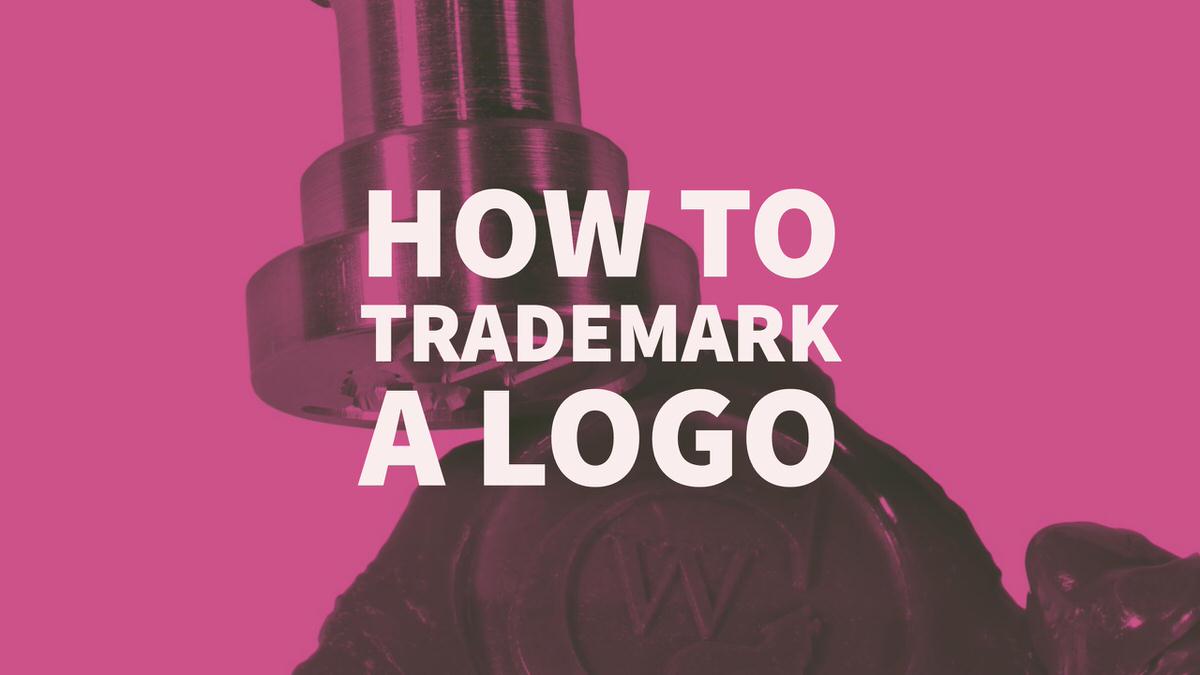
22 Jun How To Trademark A Logo Design
How To Trademark A Logo Design
The company logo design is a valuable piece of business property.
Many consumers choose between products only by looking at logos, because they associate certain brands (and their respective logo) with a quality.
As with any intellectual property, logos need to be legally protected. That is accomplished by trademarking a logo with the Intellectual Property Office.
The common belief is that all trademarks need to be registered with Companies House. However, that’s not the case when it comes to trademarking a logo design.
Companies House will only trademark the company name. The Intellectual Property Office is the agency that registers the various words, logos and pictures used to identify products or services used in commerce.
Trademark vs Copyright
Before looking at the procedure for trademarking a logo, it’s important to address an issue that is confusing to many people – what is the difference between a trademark and a copyright?
Trademarks protect a name, word or phrase, a design, or a symbol that distinguishes one company’s goods or services from those of another.
For example, Apple trademarks are plainly visible (indicated by either the “RTM” or “®” symbol) on an iPad because both the word “iPad” and the Apple logo design are protected. Consumers immediately know that the device is made by Apple, and will assume it has the same level of quality that they associate with Apple products in general.
In contrast, copyright is an intellectual property right that vests in a “work” created by the author.
As an example, the text content of a book is copyright of the author. That legally protects the book from plagiarism. When the author signs to a publishing house, he or she assigns the copyright to the publishing house in exchange for royalties.
Can a group of words be both a copyrighted work and a trademark?
Yes, if the claim is made that the phrase had an author. One example is McDonald’s, which uses the advertising slogan “I’m lovin’ it.” The phrase can be both a mark and copyrighted work. As a matter of practicality, however, most companies will file just for a trademark since it is far easier to enforce than a copyright claim for a three-word slogan.

Trade and Service Marks
Another question that often arises: what’s the difference between a trademark and service mark?
They’re essentially the same. There’s just one significant difference: the inherent nature of what is being sold or protected. A trademark protects a business name or tangible product. A service mark, as its name would imply, protects a service that is being provided.
For example, Apple marks are designated as “trade” because they protect products traded in commerce. The mark of a large financial company’s tax service, on the other hand, would be designated as a service mark since the business provides a service to customers, and not a tangible product. It is a small but important distinction.
How to Trademark a Logo Design
Every business should look into trademarking a logo design. The process is not all that difficult and is well worth the time and effort it requires.
Step One : Research
The first step in trademarking a logo does not involve the Intellectual Property Office at all.
Instead, you need to see if the logo design infringes on one that has already been used in commerce or has been registered with any intellectual property databases. This investigation is known as a professional trademark search.
It is possible to do this yourself by searching trademark registries (the important ones are run by the IPO, the EU, and the US) and looking for the use of similar logos online.
However, if a major investment is at risk, it makes more sense to hire a professional trademark company to do a thorough search. This will customarily cost around £200.
A trademark search will identify if there are any other marks about which you need to be concerned. If your logo is too similar to another, the company owning that mark can sue you for “trademark infringement.”
The core claim would be that the logo you are using is similar enough that it causes confusion among consumers.
Trademark infringement lawsuits have two distinct qualities – they are long, and they are expensive.
A business can end up paying hundreds of thousands of pounds even if it “wins” the lawsuit. By conducting a trademark search before filing an application, most businesses can avoid this problem.
Step Two : Read the ‘Rules’

Next, you must determine if the logo you have in mind will meet the requirements of the Intellectual Property Office. They will not accept logo filings with the following issues:
• Logos which include generic descriptions such as “Thick Creamy Cheese”
• Logos based on words already used in your business niche
• Logos that are not unique and distinctive
• Logos that are three-dimensional shapes
• Logos containing offensive words or images
• Logos that are, or represent items or services, against the law
• Logos which include deceptive words, such as “all organic” for a processed food
Step Three – Pick a Class
Thirdly, you must choose the class of goods or services for the mark. There are 45 classes and each represents a different area of commerce. For example, class 8 covers any trademarks applicable to razors. When filing for registration, you should select as many classes as are relevant to the logo to obtain as much legal protection as possible.
Why are classes used in the trademark process?
Classes prevent companies from overreaching with their registrations. Trademarks are intended to help companies protect their intellectual property, but may not hinder competition in an unrelated niche.
For example, a consumer seeing the trademarked phrase “amazon.com” on a brown box in the post is going to know from which company the package was sent.
Amazon.com has a clear right to that usage. However, this does not prevent a company named VisitTheAmazon.com, which provides South American tours, from using the word “Amazon” in its logo.
That prohibition would be ludicrous – and the use of classes is how the problem is avoided. The vacation company would register its logo in the class for travel, while the online retailer would register in the class for online services.
Step Four – Application
Step four is the actual filing of a trademark application with the Intellectual Property Office. The cost in the UK is £170 for one class, plus another £50 for each extra class.
The application must be completed online. In truth, there is no “application” per se. Instead, you are walked through an online questionnaire, which makes things very simple and straightforward. The process begins here: https://www.ipo.gov.uk/tm3-online/CompleterTypeQuestion/Edit
Step Five – Approval
Once the filing process is complete, the IPO will assign an examiner to the case. This individual will review the application and provide you with written correspondence within 10 business days, indicating whether the logo will be approved.
If it is rejected, you will be told why and given the opportunity to respond. If the registration is approved, the logo will be published in a trademark journal to allow other businesses to object to the filing. Objections are rare.
The entire process should take about three months if everything goes smoothly.
The Importance Of Registering
Every business should trademark its logo design; its name and other important slogans and brand assets. The expense of creating public records of the marks is small, compared to the profits that could be lost if competitors try to infringe on your market and credibility. Hopefully, this article will help you learn how to trademark a logo ensuring your business is protected in future.



